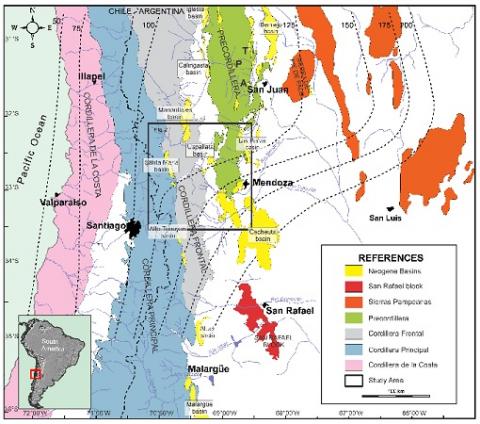E.K. Buelow; J. Suriano; J.B. Mahoney; D.L. Kimbrough; J.F. Mescua; L.B. Giambiagi; G.D. Hoke
2 018
GeoScienceWorld March 23, 2018
Retroarc foreland basins in contractional arc settings contain evidence of temporal and spatial variations in magmatic activity, deformation, and exhumation along the continental margin and serve as excellent recorders of subduction dynamics through time. The Cacheuta basin, northwestern Mendoza Province, Argentina, is situated within the transition zone between the Pampean flat-slab subduction segment north of 33°S and the normal-dipping slab segment of the Southern Volcanic Zone to the south, and it records a detailed history of Andean orogenic exhumation at this latitude. The integration of sedimentologic, stratigraphic, geochronologic, and sediment provenance data from the Cacheuta basin constrains orogenic exhumation patterns and basin evolution during basin development. Cacheuta basin strata record at least a 12 m.y. period of basin evolution (ca. 20 Ma to younger than 7.5 Ma), based on new geochronology. The timing of initial basin subsidence is constrained by the lowermost sample in the Mariño Formation, which yielded a maximum depositional age of 19.2 ± 0.26 Ma, ∼4 m.y. earlier than previous interpretations. Conglomerate clast counts, thin section petrography, and detrital zircon analyses, coupled with distinct sedimentologic variations, record progressive orogenic exhumation of the Cordillera Principal, Cordillera Frontal, and Precordillera during early to middle Miocene time. Examination of basinal strata demonstrate that uplift of the Cordillera Principal, Cordillera Frontal, and Precordillera, and simultaneous development of the Cacheuta retroarc foreland basin, in the early to mid-Miocene was the result of contractional deformation and crustal thickening during normal subduction-related orogenic processes and did not result from the development of the flat slab in late Miocene time.

